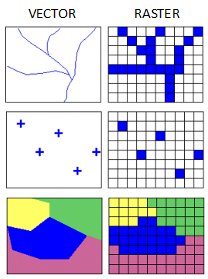

Raster images, on the other hand, can be enlarged, but look bad when made too big. If you create a vector logo, you can use it on a business card or a building, and it will be precisely the same in terms of clarity. The cool thing about vector artwork is that you can make it any size, no matter how small or large, without sacrificing quality. Text can also be turned into points and shapes (this is referred to “converting text to paths” or “changing text to outlines”). Usually text can also be created with this software. WIth vector software, you can shade and color these shapes to create some rather stunning, realistic images, or use them to create simpler images like cartoons, charts and other images.
#Vector or raster software#
Software programs like these provide tools to create shapes, such as lines, points, circles, curves, and rectangles. Vector graphics are created by software such as Adobe Illustrator, CorelDraw, as well as a large number of other freeware and purchased apps (click here for a handy list of non-traditional vector software).

Vector images are shapes that can be colored or shaded, whereas raster images are made of tiny pixels. If vectors are the paint-by-number variety, raster images could be explained as being the actual painting – made with a brush or camera. Vector graphics are much like the little spaces you paint in to eventually create the illusion that becomes an entire painting.
#Vector or raster how to#
Here are a few pointers to help you better understand what vector and raster images are, when to use them, as well as how to convert them into either file format.ĭid you ever play with a paint-by-number kit? That’s an easy way to think of vector images. While it looks like a photo, it’s actually a vector image – and that’s an important file-type distinction when it comes to using the art for everyday projects. We’ll use this file to create a mock-up banner (using vector art) and a social media post (using raster art). This is a perfect image to discuss the differences between vector and raster images, as well as how to make both from the same file. Today I’m working with a vector image from. Your file type matters – especially when it comes to posting social media graphics, working with commercial printers, or creating really big graphics, such as a banner or trade show display. When selecting stock art to use for a specific project, it’s critical to know the difference between these two file types. When working with images, you might have come across the terms “vector” or “raster” when describing an image.


 0 kommentar(er)
0 kommentar(er)
